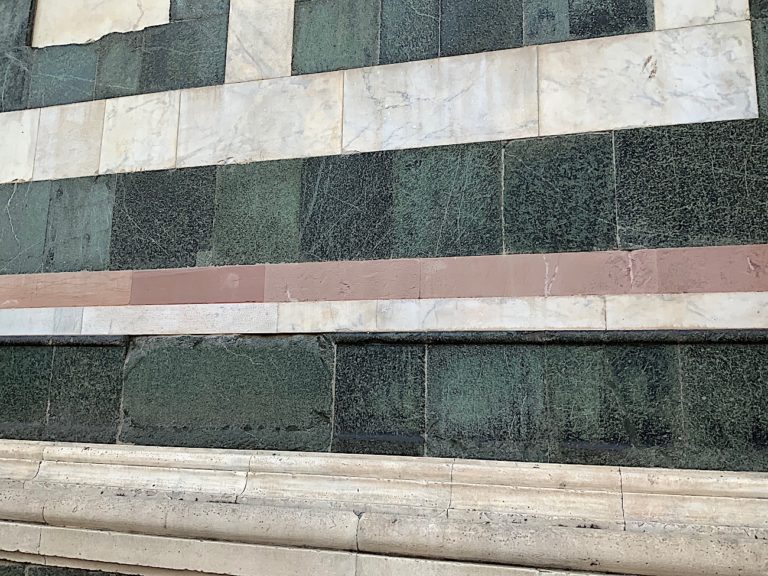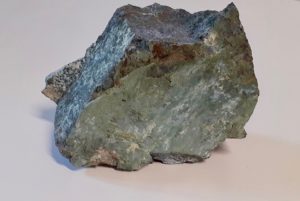
Lithotype
Serpentinite
Common names
Marmo Verde, Verde di Prato, Nero di Prato, Marmo Nero, Paragone
Rock classification
Metamorphic rock
Florence and Prato Province: Impruneta, Figline di Prato.
The serpentinite is a metamorphic rock, forming at low (100°C) to intermediate (700°C) temperature, in many different geologic settings, by the hydration of olivine- and pyroxene-rich ultramafic rocks (peridotites). During the serpentinization process, the primary Mg-rich minerals (olivine, orthopyroxene, and clinopyroxene) are replaced by serpentine-group minerals. In Italy, serpentinite outcrops occur in the Alps and in the Apennines. The serpentinite used in the florentine architecture has been historically referred to the Ophiolitic Complex (Northern Apennine), outcropping in Tuscany in different localities such as Impruneta, Prato, Pistoia, Siena and Volterra. The sequence of Tuscany Ophiolitic Complex, originated, during the Jurassic period, mainly consists of two serpentinite masses separated by a gabbro lens.
This rock, worldwide used since ancient times for ornamental and building purposes, was employed in Tuscany for the first time during the Middle Age. In Firenze it is present in the facing of many important religious buildings such as the Cattedrale di Santa Maria del Fiore, Battistero di San Giovanni, Campanile di Giotto, Basilica di Santa Croce, Santa Maria Novella and San Miniato al Monte. The so-called “Verde di Prato” represents one of the characteristic lithotype of Firenze architecture.
The serpentinite consists mostly of serpentine-group minerals (antigorite, lizardite and chrysotile) and subordinately by magnetite, brucite, talc, calcite and magnesite.
Macroscopic description
The typical combination of mineral products results in a fine-grained, dark green to black rock (commonly crossed by veins of variable colour and composition), whose density is significantly lower than that of the primary peridotite.
Microscopic description
The rock, with its typical bastite and mesh texture, is characterised by fine-grained serpentinitic minerals in which chrysotile is recognisable in cross-fibre veins. Ghosts of pyroxenes, displaying a coarse particle size are easily distinguishable together with accessory minerals as magnetite and spinel.

